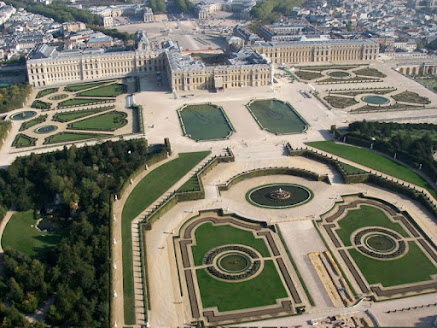"... I to Monte Carlo went, just to raise my winter's rent...
And I've now such lots of money, I'm a gent...You can hear the girls declare
'He must be a Millionaire.'"
You can see them wink the other eye
At the man who broke the bank at Monte Carlo."
-- lines from a song that Bing Crosby included on his album 101 Gang Songs (in 1961).
=====================================================================
(on the French Riviera) Monaco is found along the Mediterranean Sea in the midst of the resort area of the French Riviera. The city of Nice, France, lies 9 miles (15 km) to the west, the Italian border 5 miles (8 km) to the east. Monaco’s territory occupies a set of densely clustered hills and a headland that looks southward over the Mediterranean. Many features have made Monaco among the most luxurious tourist resorts in the world and have given it a fame that far exceeds its size.
+ Visitors to Monaco alternate their hours between its beaches and boating facilities, its international sports-car races, and its world-famous Place du Casino, the gambling center in the Monte-Carlo section.
+ Evidences of Stone Age settlements in Monaco are preserved in the principality’s Museum of Prehistoric Anthropology. In ancient times the headland was known to the Phoenicians, Greeks, Carthaginians, and Romans. In 1191 the Genoese took possession of it, and in 1297 the reign of the Grimaldi family began. The Grimaldis allied themselves with France (except for the period when they were under the protection of Spain.) In 1793 they were dispossessed by the French Revolutionary regime, and Monaco was annexed to France. With the fall of Napoleon I, however, the Grimaldis returned; the Congress of Vienna (in 1815) put Monaco under the protection of Sardinia. The principality lost the neighboring towns of Menton and Roquebrune in 1848 and ceded them to France under the terms of the Franco-Monegasque treaty of 1861. The treaty did restore Monaco’s independence, however, and in 1865 a customs union was established between the two countries. Another treaty that was made with France, in 1918, contained a clause providing that, in the event that the Grimaldi dynasty should become extinct, Monaco would become an autonomous state under French protection. In 1997 the Grimaldi family commemorated 700 years of rule, and in 1999 Prince Rainier III marked 50 years on the throne. Upon his death, he was succeeded by his son, Albert, who assumed the throne in July 2005. Monaco joined the UN in 1993. It phased out the French franc for the European euro by 2002.
+ Today. Monaco’s main industry is tourism, and its facilities make it one of Europe’s most luxurious resorts. Once a winter attraction, it now draws summer visitors as well to its beaches and expanded mooring facilities. The social life of Monte-Carlo revolves around the Place du Casino. The casino was built in 1861, and in 1967 its operations were taken over by the principality. Banking and finance and real estate are other important components of the diverse services sector.










